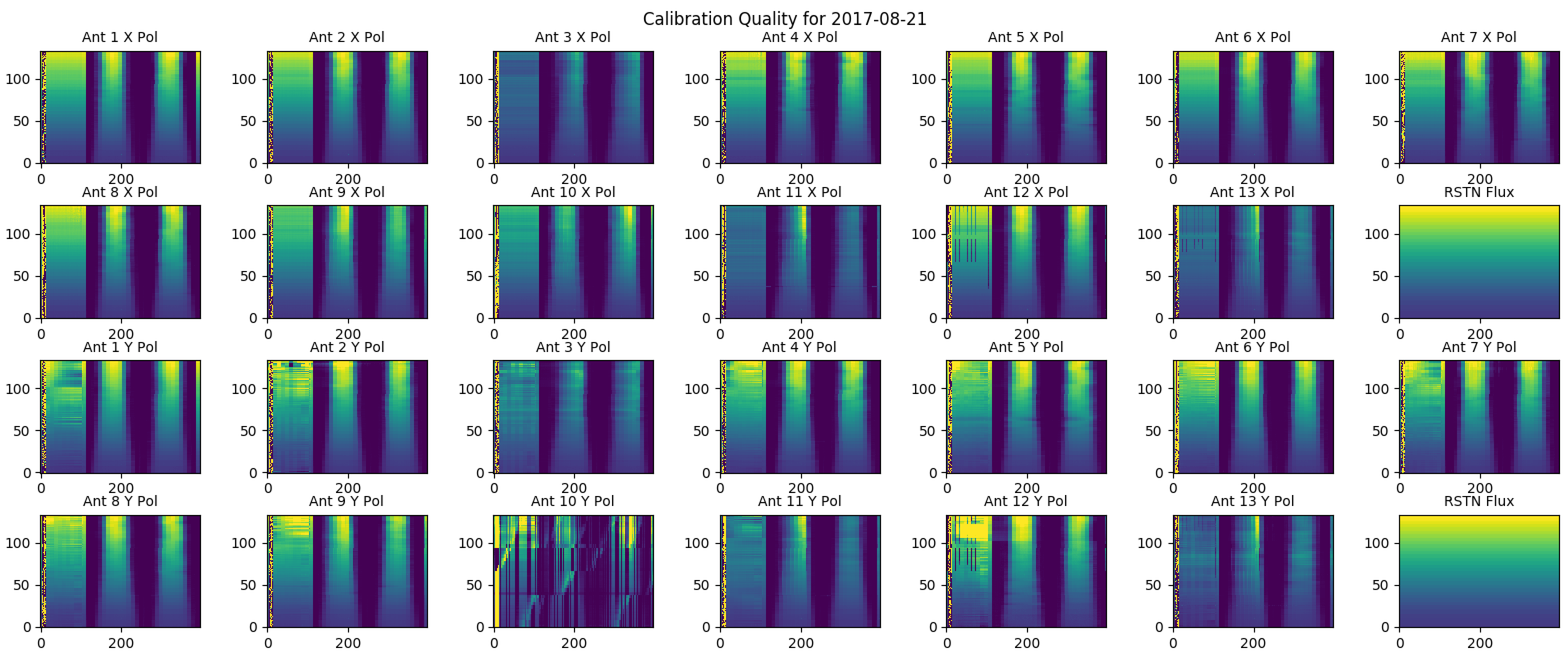Practical Calibration Tutorial
This page is a practical tutorial for calibrating EOVSA data. Note currently the calibration processes can only be done on EOVSA site machines (such as pipeline), as the calibration SQL database is only available there.
Preparation
First, identify whether or not EOVSA had the observation for the time range of the event (e.g., a flare). There are many ways to do this, but a nice way is to use the RHESSI Browser and check "EOVSA Radio Data" on the upper left. Use the time you identified to find the corresponding IDB file(s) under /data1/eovsa/fits/IDB/yyyymmdd/. *Typically*, each IDB data file has a 10-minute duration. Then, on pipeline, it is advised to go to your working directory and copy the IDB data into your directory. Note, never, NEVER, work directly on the IDB data in the original data directory! Here I use /data1/eovsa/fits/IDB/20170821/IDB20170821202020 (2017 Aug 21 C flare) as an example.
Absolute Flux Calibration
Start IPython in your working directory. Here I am loading all pylab modules (I know this is not a good way, but simple).
ipython --pylab
Check the quality of the absolute flux (total power) calibration for the particular day
In [1]: from util import Time
In [2]: import daily_xsp
In [3]: daily_xsp.cal_qual(Time('2017-08-21'))
This command will apply attenuation calibration and feed rotation from the database to total-power gain calibration data, and display a figure as below.
Apply Reference Phase and Daily Phase Calibration to Visibility Data
Start CASA in your working directory
casa
- Import Miriad file into CASA.
importeovsa(idbfiles='IDB20170821202020')
idbfiles could be a string of the IDB file name, or a list of IDB files. The output is automatically named "IDB20170821202020.ms".
